Fasil Ghebbi in Gondor Region, Ethiopia
Fasil Ghebbi is a fascinating historical site in the Gondar Region of Ethiopia. It is recognized by UNESCO for its importance and beautiful architecture. Built in the 17th century as the royal fortress for Emperor Fasilides, this remarkable complex served as the center of power for the Ethiopian Empire during a significant period known as the Zagwe era. Fasil Ghebbi not only reflects Ethiopia’s rich past but also connects visitors to the country’s vibrant culture, showcasing the strength and elegance of its former civilizations.
Today, Fasil Ghebbi attracts visitors from around the globe, inviting them to explore its rich history and learn more about Ethiopia’s royal past. This remarkable site is also famous for hosting the Timkat festival, a lively celebration of the Epiphany that highlights its cultural importance. In summary, Fasil Ghebbi is a key historical and cultural landmark in Ethiopia. It represents the beauty of the country’s history and its essential role in shaping its identity.
Table of Contents
Where is the location of Fasil Ghebbi?
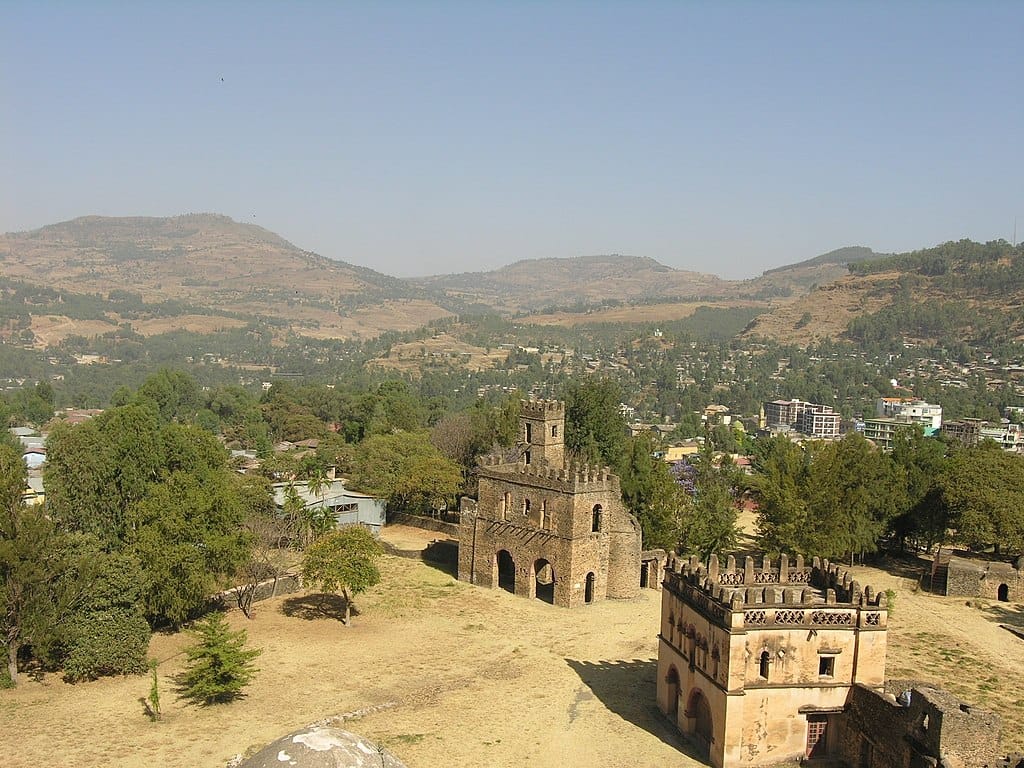
Fasil Ghebbi is a historic site located in the Amhara region of Ethiopia, specifically in the North Gondar area. This impressive place is an excellent destination for anyone interested in exploring Ethiopia’s fascinating history and culture. It is easy for visitors to reach, making it a fantastic spot for discovering the rich heritage of Ethiopia.
What is the inscription of Fasil Ghebbi?
Fasil Ghebbi became a UNESCO World Heritage Site in 1979. This designation shows its significant value to the world, especially as a symbol of strength and creativity during the rule of Emperor Fasilides and later leaders. The site features a unique architectural style that reflects various influences and showcases Ethiopia’s rich cultural heritage. Fasil Ghebbi is recognized as an essential part of Ethiopia’s cultural identity. That highlights the need to conserve and appreciate historical sites. The acknowledgment also promotes tourism and raises awareness about the Ethiopian Empire’s rich history and cultural significance.
What is the history of the Fasil Ghebbi (Fortress City)?
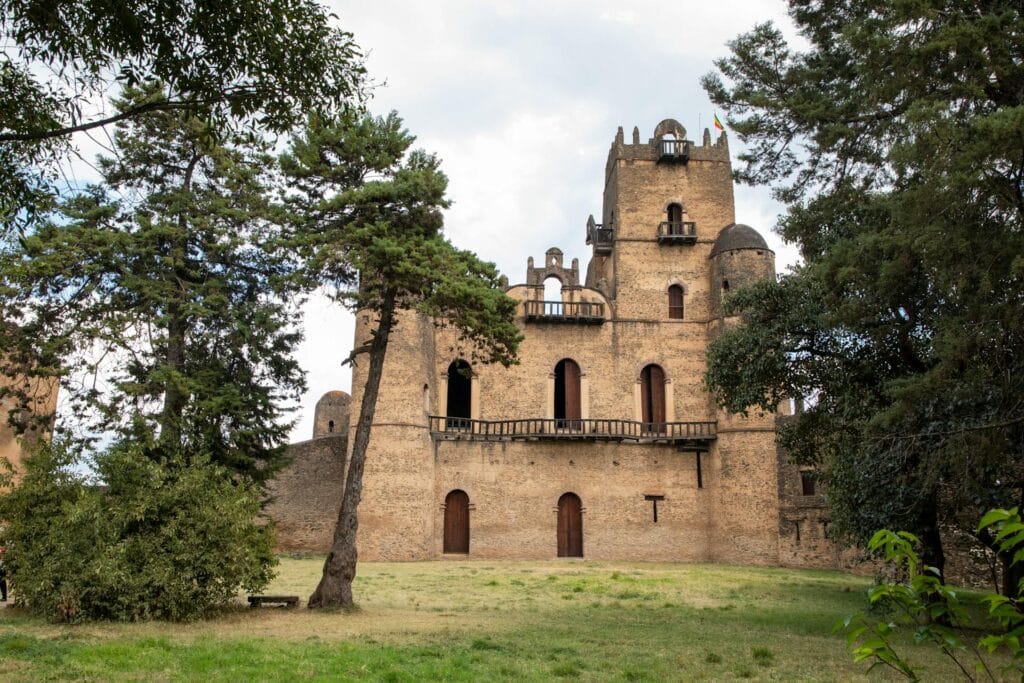
From the 1300s to the 1600s, Ethiopian kings often moved their royal camps from place to place. In 1636, King Fasil, also known as Fasilidas, decided to settle in a place called Gondar, making it the principal capital of his kingdom. During the 16th and 17th centuries, a special fortress area called Fasil Ghebbi served as a stronghold and the home for Emperor Fasilides and his family. Over time, this royal court transformed from a temporary camp into a fortified city known as Fasil Ghebbi, which continued to be vital until it fell apart in the late 18th century.
The Fasil Ghebbi palace complex features several essential buildings, each with its own story and significance. Among them are the Castle of Emperor Fasilidas, the Castle of Emperor Iyasu, the Library of Tzadich Yohannes, the Chancellery of Tzadich Yohannes, the Castle of Emperor David, the Palace of Mentuab, and the Banqueting Hall of Emperor Bekaffa. These structures highlight the rich history and culture of the area.
Fasil Ghebbi, Qusquam, and other sites give us a wonderful glimpse into Ethiopia’s recent past, especially in the highlands just north of Lake Tana, during the 16th to 18th centuries. Visiting these locations takes you on an exciting journey through their rich history and cultural importance.
What is Gondor City famous for?
The ‘Gondarian Period’ style began in the city of Gondar in Ethiopia during the early 17th century and had a significant impact on the country’s architecture for more than 200 years. The Fasil Ghebbi and other historical sites in Gondar city blend various cultures, both from within Ethiopia and beyond. They reflect influences from the Ethiopian Orthodox Church, Ethiopian Jews, and Muslims. This mix of cultures can be seen in the unique architecture of these places as well as in the arts and crafts, paintings, literature, and music that thrived in the seventeenth and eighteenth centuries. By the 19th century, Gondar had become a key hub for trade and transportation in northwestern Ethiopia, and many of its monuments still hold significant religious importance today.
What is the architecture of Fasil Ghebbi?
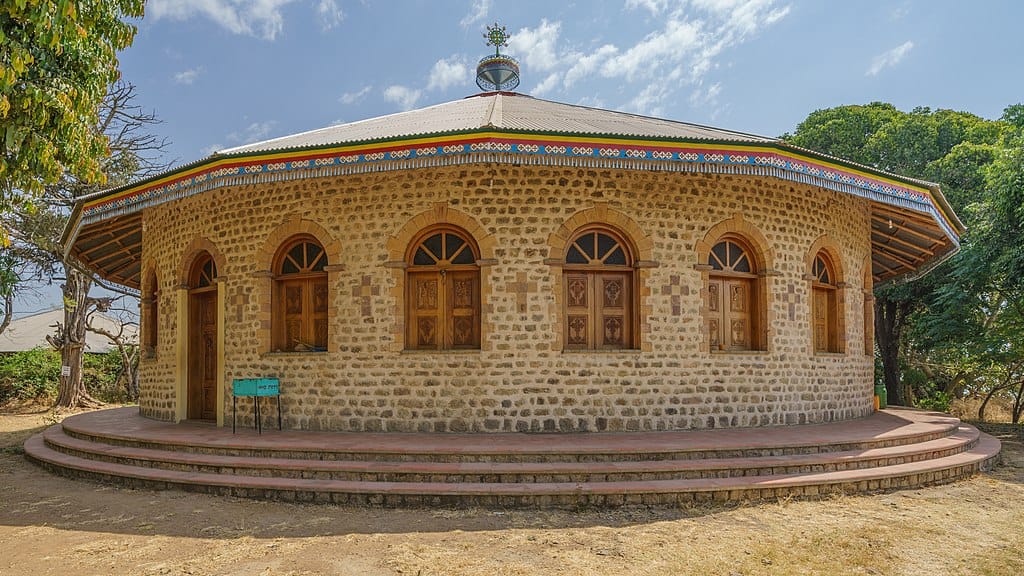
The Fasil Ghebbi, also known as the Fortress City, was the center of the Ethiopian government until 1864. Later on, Jesuit missionaries brought a new architectural style influenced by Baroque designs, which transformed the appearance of Gondar. The buildings in Fortress City include stunning palaces, churches, and monasteries, as well as interesting public and private structures that showcase influences from Hindu and Arab styles. The complex consisted of six main groups of buildings and several other structures, all surrounded by a wall that stretched 900 meters. There were twelve entrances and three bridges to access the area.
Fasilides Castle stands as a powerful symbol of the impact and authority of the region’s rulers. The design of Fasil Ghebbi is an interesting mix of styles from Ethiopia, Portugal, and India, showcasing the diverse cultural exchanges that took place during that time. Similarly, Debre Berhan Selassie Church is famous for its beautiful paintings and detailed artwork on the ceilings, highlighting the rich cultural variety that was present during that era.
What is Fasil Ghebbi famous for?

Fasil Ghebbi is a remarkable historical site in Gondar, Ethiopia, recognized by UNESCO as a World Heritage Site. This fascinating complex includes a series of castles and palaces built during the 17th century by Emperor Fasilides and his successors. What makes Fasil Ghebbi stand out is its unique mix of architectural styles that bring together influences from Ethiopia, Portugal, and India.
Fasil Ghebbi was once the heart of the Ethiopian Empire, making it an essential place in the country’s history. Some of its most notable buildings include the Fasilides Castle and the Church of St. George, which are known for their beautiful designs. Today, Fasil Ghebbi attracts many visitors because of its rich history, stunning structures, culture and heritage.
Why do we need to preserve Fasil Ghebbi significantly for us and future generations?
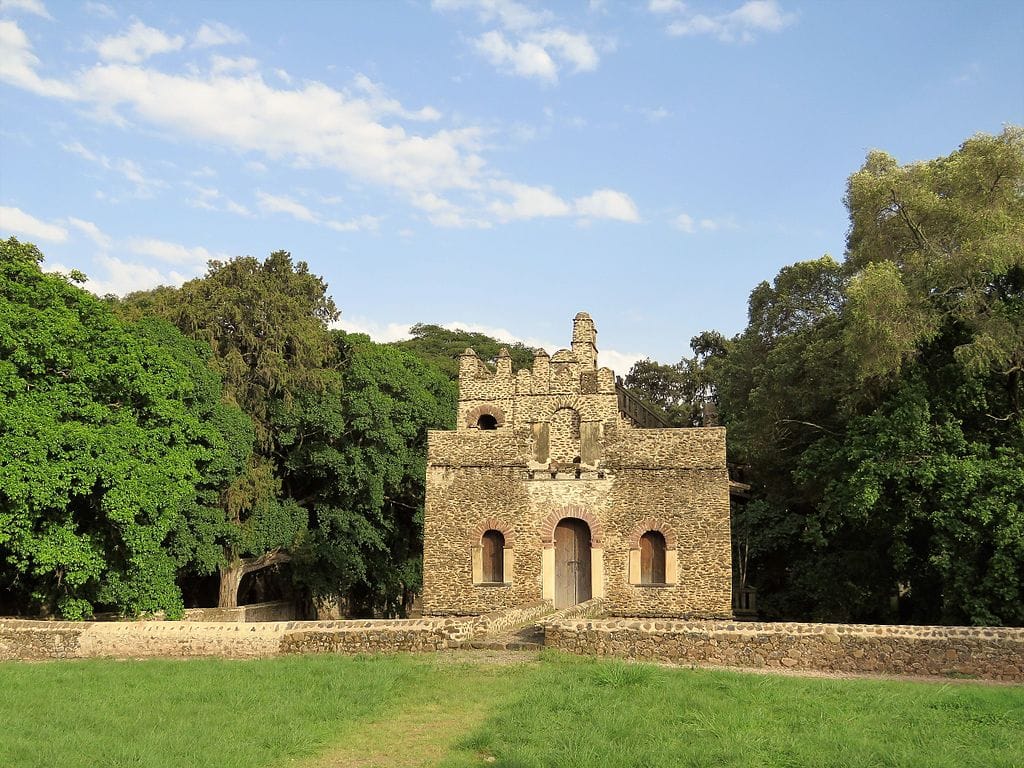
Preserving Fasil Ghebbi is essential for many reasons. First and foremost, it is recognized by UNESCO as a World Heritage Site, which means it represents the rich culture and history of Ethiopia. The architecture here beautifully combines elements from African and Middle Eastern styles, showcasing the creativity and artistry of past civilizations. Maintaining this site preserved helps us remember and appreciate their contributions to art and history.
Moreover, Fasil Ghebbi is a source of pride for Ethiopians, assisting people to feel connected to their heritage and community. It’s a place where current and future generations can learn about Ethiopia and the importance of its history. Additionally, protecting sites like Fasil Ghebbi can boost tourism, which helps local businesses and encourages cultural exchange. Overall, by preserving Fasil Ghebbi, we ensure that history’s beauty and significance can be shared and appreciated for many years to come.
Why should you visit the Fasil Ghebbi as a visitor?
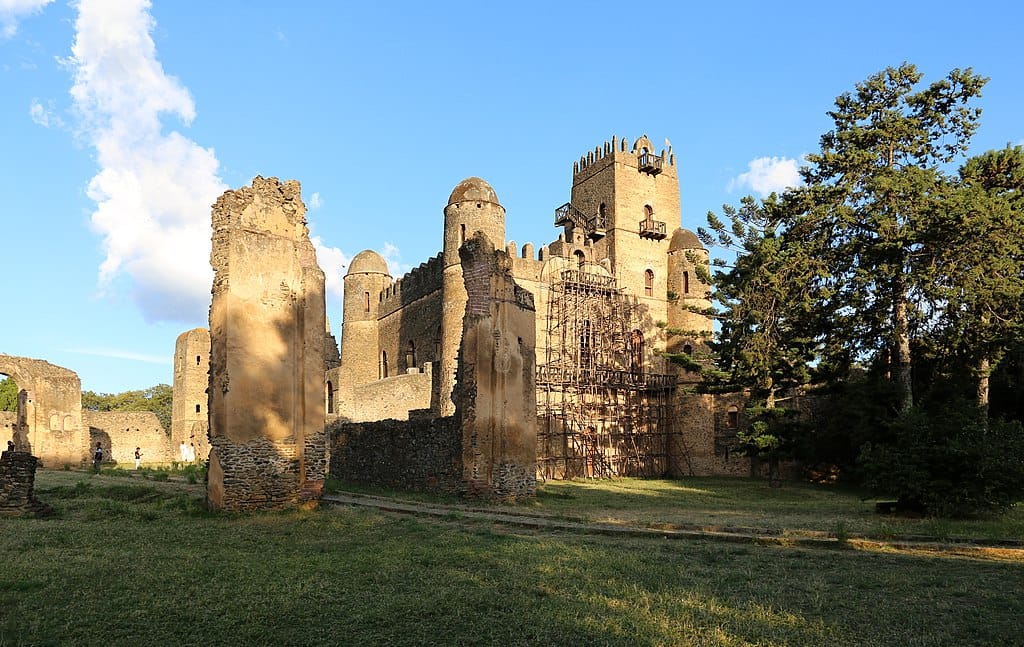
Visiting Fasil Ghebbi is a fantastic way to dive into Ethiopia’s fascinating history and lively culture. This site is recognized by UNESCO as a World Heritage Site, meaning it has special importance to the world. The stunning buildings here show the different cultures that have influenced Ethiopia over the years, making Fasil Ghebbi a truly remarkable place to see.
When you explore this royal fortress, you can feel a connection to the Ethiopian Empire, especially during Emperor Fasilides’s reign. Fasil Ghebbi is also the setting for the vibrant Timkat festival, which adds even more excitement to your visit. Overall, Fasil Ghebbi is a must-see spot for anyone interested in history or looking to appreciate the beauty and meaning of Ethiopia’s culture.
How would you feel connecting with the legacy of the Ethiopian Empire at a UNESCO World Heritage Site?

Don’t miss the chance to explore Fasil Ghebbi, where history and culture intertwine in an unforgettable experience. Plan your trip and discover the architectural wonders, rich heritage, and vibrant traditions that await you at this magnificent Ethiopian landmark. Dive into the legacy of the Ethiopian Empire.
When you’re planning your adventure, enhance your travel experience by using trusted websites like GetYourGuide and Trip.com! These platforms offer a variety of enjoyable tours, activities, and accommodation options to suit every traveler’s needs.
- GetYourGuide offers a wide variety of unforgettable travel experiences. You can choose from tickets to Popular Attractions, Transportation Options, City Passes, Guided Tours, Hop-on Hop-off Bus Services, Water Activities, Day trips, and Trips that last several days in many locations around the world.
- Trip.com makes it easy to combine Flights and Hotels, Trains, Car Rentals, Airport Transfers and Attractions & Tours to create the perfect travel package tailored just for you.
Start your journey with our reliable travel partners and unlock the best of Fasil Ghebbi and beyond!
Disclaimer
In this post, affiliate links are included and those links are associated with well-known travel companies such as GetYourGuide and Trip.com. If you choose to purchase or book a service using those links, we may earn a commission at no additional cost to you. We focus on recommending products and services that are helpful to you and we appreciate your support!
Conclusion
We hope you find this information helpful for your next trip. If you want to learn more, check out our other travel blog posts. We cover many topics, including amazing places to visit and helpful travel tips. Whether you’re looking for hidden gems, new cultures, or helpful advice, there’s something for everyone.
Additionally, If you enjoyed the information we shared, don’t forget to explore our other travel product reviews to make your journey even better! Please take a moment to look through our previous posts and let your sense of adventure guide you on your next journey! We wish you happy travels and look forward to sharing more with you in our next blog post!




